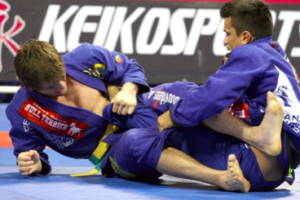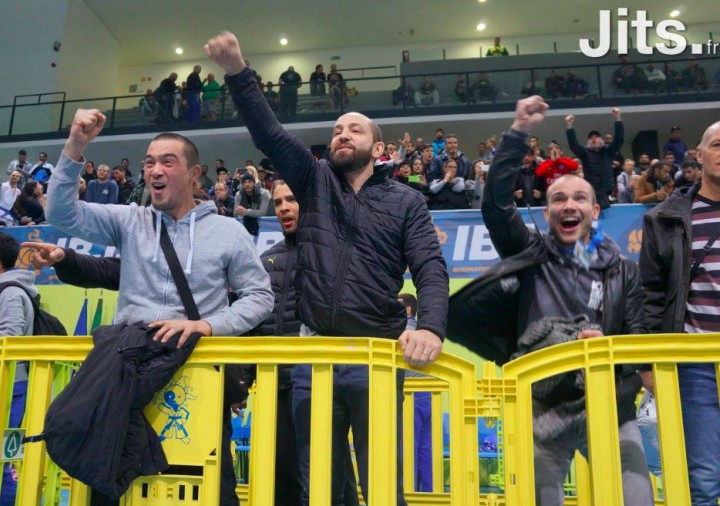Photo: Raphael Levy of Jits Magazine France
We’ve all laughed and giggled when we’ve heard less experienced coaches shout to their students things like: “do something”, “get out of there”, etc. The fact is that coaching someone in a match requires a very keen eye and attention to detail. Ideally, you want to also know that person’s game plan, as you might shout something to him which, while effective, might not adhere to the gameplan.
Let’s have a look at some elements you can analyze when giving instructions:
Imminent dangers.
A priority when shouting instructions should be imminent dangers. If you see the opponent setting up an armbar, choke, sweep or any other technique that puts your competitor in imminent danger. When this happens, give proper and clear instructions to your student as to how to escape that certain danger. If you can’t come up with any proper instruction as to how to avoid the danger, the next best thing you can do is warn your student of the danger. Tell him the opponent is attempting that technique. Being aware of the danger will increase the chances of avoiding it.
Vulnerabilities.
Immediately shout to your student once you see an opening in his opponent’s game. This can mean a lot of things. Improper posture, lack of posting, lack of balance, vulnerability to a submission, etc. It’s even better if you can instantly shout the technique required to exploit that certain vulnerability.
Current status of the game.
Extremely important. Keep your student updated on the points, advantages and time left. Depending on this, he will have a clear image of where he is in the match, how far he is behind or ahead. Make sure you always give out correct information. Telling your student he has one minute left (when he actually has 3 minutes left) might make him to go all out, expecting the match to end. If he doesn’t end the match via submission in that minute, this might prove catastrophic if he gasses out.
Stalling.
Whether we like it or not, stalling is a huge part in competitions. Used intelligently, it can definitely win you matches. Make sure you have a clear understanding of the current status of the match and the rules, so you know when to tell your student to stall (if needed) or stop stalling.

Tips for rule exploiting.
At the highest level, competitors exploit even the smallest rule. One advantage made a difference in so many matches. Make sure you are familiar with all the rules and inform your student when he has the chance to exploit a rule. About to be taken down? Tell him to try and get off the surface while sprawling. Opponent can recover a quarter guard but your student is very good on top? Tell him to let himself get caught in quarter guard so he can pass again and get the points.
Pacing and mental coaching.
As a coach you have to always be aware of your student’s mental state and pacing. He might get caught in the heat of the match and adopt a way higher pace than he can physically sustain. He might get angry and frustrated and start making mistakes. At these times you have to warn him to slow down and calm himself in order to get something out of the match. You should also tell him when to increase pace and aggression if needed. Another important element is encouraging your student. Even if he is doing bad, encouraging him and keeping his morale as high as possible during the match might go a long way towards getting a result.
Referee pressure.
Another element which usually isn’t talked about very much. Although it’s hard to quantify this into statistics, there have been numerous occasions where putting pressure on the referee made him give points (rightly or wrongly) to one of the competitors. In order to be able to do this, you need a very good understanding of the rules. By knowing the rules, you will know when the referee makes a wrong choice and you can be vocal about it instantly.
Game over.
We’ve all seen competitors get carried away. The huge amount of adrenaline and aggression generally released in a match often makes competitors get carried away and have the “fight to the death” mentality. We’ve often seen competitors get injured by refusing to tap in situations where they had no escape. The harsh reality is that there are few matches and situations where one competitor should risk his wellbeing for a slim chance of winning the match. Unless you are a professional or otherwise in a very important match, it’s usually not worth months of recovering and medical expenses for only a slim chance to escape the submission. Make sure you tell your student to tap when the situation calls it.


















